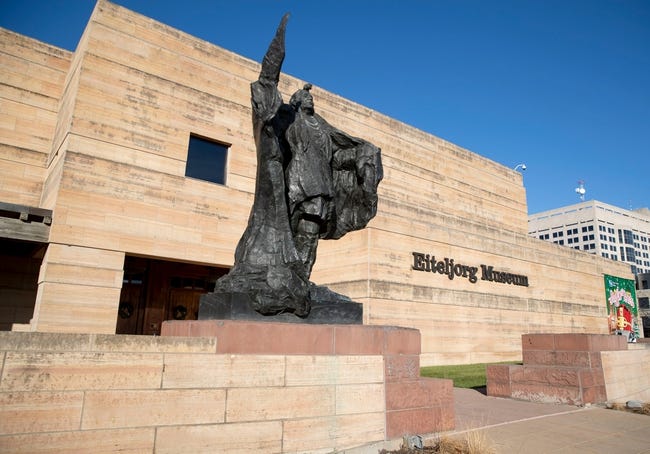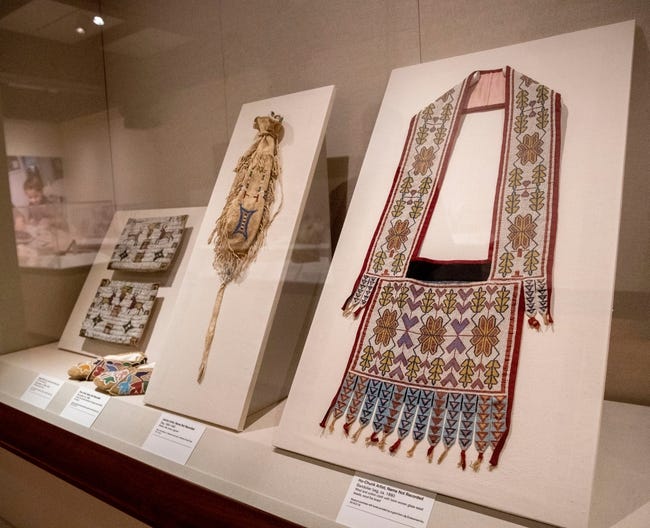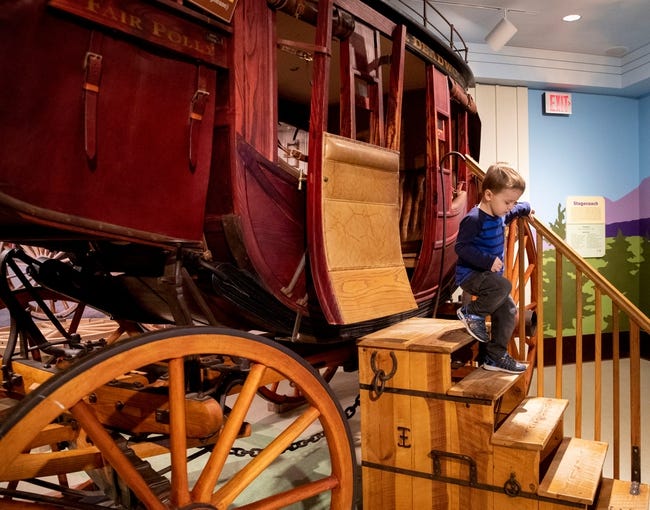Showcasing Native American art from across North America and Western American art, the Eiteljorg is the only museum of its kind in the Midwest. Its mission is to inspire an appreciation and understanding of the art, history, and cultures of the American West and the Indigenous peoples of North America. The Eiteljorg serves the public through engaging exhibitions, educational programs, and special events that emphasize cultural diversity.

Located at 500 W. Washington Street in , the museum opened in June 1989. Its founder, Indianapolis businessman, philanthropist, and art collector , donated more than 2,000 items, including Native American objects and Western artworks, that comprised the museum’s original collection. Other prominent collectors later gifted many Western and Native artworks to the museum. The museum’s collections had grown to include nearly 9,000 objects by 2020.
Two floors of galleries feature continuing and special exhibitions. The first-floor Western Art Galleries renovated in 2018, showcase works by Frederic Remington, Charles Russell, Georgia O’Keeffe, and other renowned painters and sculptors for whom the West was both subject and inspiration. Galleries emphasize diversity with works by Native American, African American, Asian American, Latino, and LGBTQ artists.

The second-floor Native American art galleries highlight artworks and cultural items of Indigenous peoples from across the North American continent, spanning the 18th century to the present, with a special focus on Native cultures of the Great Lakes region, including Indiana. Pottery, basketry, weavings, carvings, beadwork, ribbon work, and contemporary art underscore that Native art is not static and that Native peoples are a vital part of American society today.
Since 1999, the museum has awarded the prestigious biennial Eiteljorg Contemporary Art Fellowship to important Native artists in the contemporary field and presents special exhibitions of their artworks. By acquiring such works, the Eiteljorg has developed one of the best collections of contemporary Native art in the world.

Open 362 days a year, the Eiteljorg presents programs such as lectures, artist residencies, tours, art shows, and performances. The annual Indian Market and Festival, held in late June the weekend after Father’s Day, brings more than 100 Native artists who show and sell their fine art (see ). The Quest for the West® Art Show and Sale draws art collectors who purchase paintings and sculptures from Western-genre artists each September. The museum’s annual model train display, Jingle Rails: The Great Western Adventure, is a popular holiday family experience. The museum informs the public via its website, social media platforms, and award-winning Storyteller magazine.
A 501(c)(3) nonprofit, the museum receives support from grants, donations, planned giving, memberships, and revenue from ticketed admissions, the museum store, and rental spaces. The museum drew approximately 125,000 visitors per year in the mid-2010s. With a national reputation as an institution of the arts and humanities, the Eiteljorg works with scholars, researchers, and tribal representatives.
Designed by architect Jonathan Hess, the original museum building was inspired by Pueblo adobe dwellings of the Southwest. Major gifts from Harrison Eiteljorg and the funded construction. A 2005 expansion doubled the building’s size, adding a café, outdoor terrace, shaded performance stage, and an indoor children’s discovery area, the R. B. Annis Western Family Experience, which was endowed by the R. B. Annis Educational Foundation.
In June 2022, the museum completed updates to its Native American Galleries, which feature “Native peoples’ narratives and ways they define their culture.” In 2022, the Eiteljorg also completed a $55 million capital campaign, which added to its endowment and a restructuring of its galleries and events space, including renovations of the Education Center and expansion of the Sculpture Court.

Help improve this entry
Contribute information, offer corrections, suggest images.
You can also recommend new entries related to this topic.